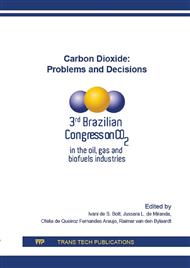p.57
p.65
p.71
p.78
p.85
p.95
p.109
p.117
p.125
Analysis of Natural Gas Production in Pre-Salt via Pipelines with MEG and Onshore Processing
Abstract:
The exploration of pre-salt introduces challenges beyond those posed by ultra-deep waters and the thick of carbonaceous reservoirs. Among the main difficulties are the high gas-oil ratio and the high content of carbon dioxide (CO2) present in the gas. This paper proposes an alternative to the technology currently used in the exploration of pre-salt, in which the gas is treated on the platform. The proposed alternative is applicable to reservoirs which CO2 concentration in gas is greater than 50%, like Jupiter that contains 79% of CO2. For this scenario is suggested that exploration occurs in three production areas: subsea, offshore and onshore. The proposed technology includes the construction of three subsea pipelines: one for the transportation of untreated gas (that is treated onshore); a second for the return of the recovered hydrate inhibitor (in order to be re-injected into the gas pipe) and the last for the return of the carbon dioxide stream separated from the gas.
Info:
Periodical:
Pages:
85-92
Citation:
Online since:
March 2016
Keywords:
Price:
Сopyright:
© 2016 Trans Tech Publications Ltd. All Rights Reserved
Share:
Citation:


